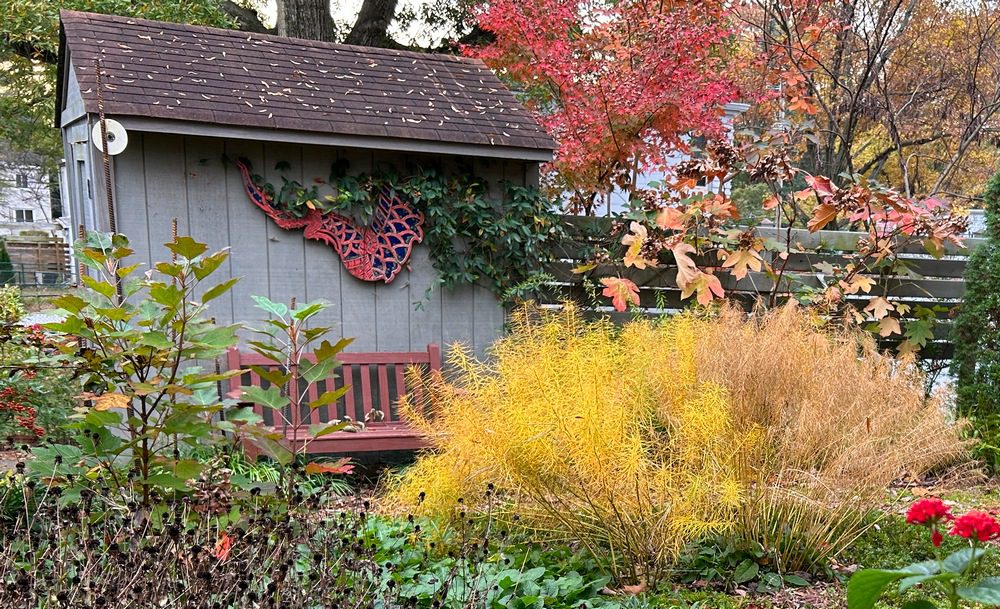
Amsonia hubrichtii, center right, in the fall, not long before they started falling over.
When I recently wrote about which leaves it’s best NOT to leave on top of which plants, I also confessed to confusion over the question of leaving stems intact for stem-nesting bees. The consensus seems to be that whenever you cut them, it’s best for bees to cut them back to varying heights from about 8 to 24 inches, and leave them in place indefinitely – because it’s not until the stems’ SECOND YEAR that young bees emerge from hibernation there.
But if for some reason it doesn’t work for you or your garden to leave the shortened stems in place indefinitely or for at least 18 months according to several sources, is there an alternative that still could help the targeted bees? Or how about if your perennial stems aren’t standing up but are flopping over, and you’ve read several places that stems lying on the ground get too soggy (or something) to be useful to the bees, so it’s best to prop keep them vertical?
Well, most of the stunning stems of my three AmsoniaS shown above had fallen to the ground by early winter, so I gave myself permission to bundle and prop them up with the help of the rebar originally used for displaying deer-spooking CDs.
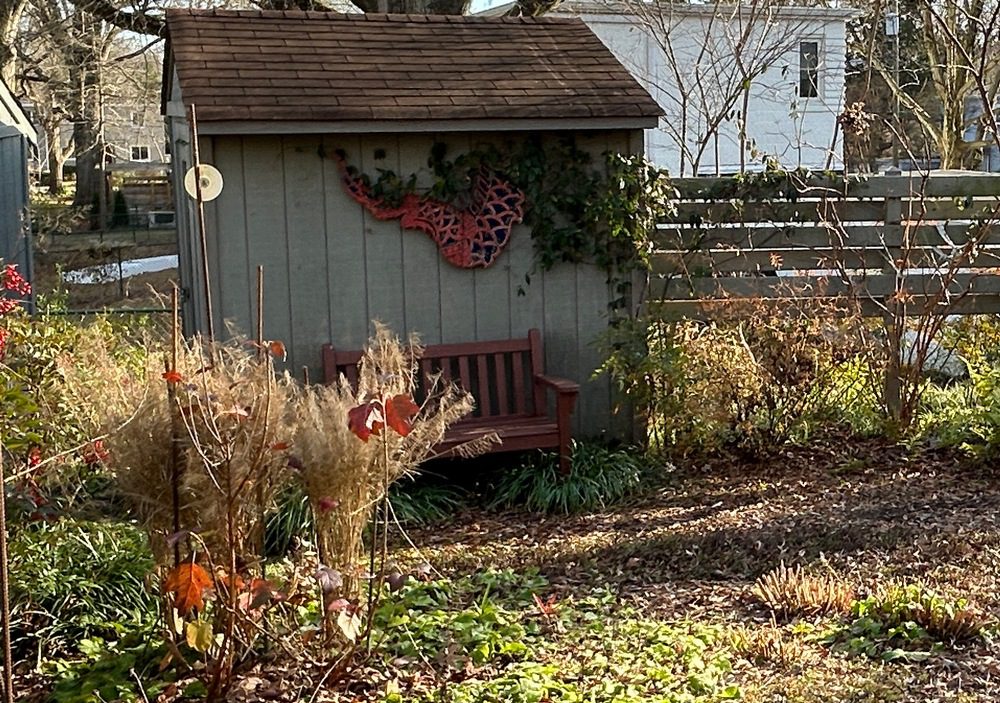
This next photo shows the resulting bundles (and a lone CD) in December. Removing the fallen stems uncovered the ground around the Amsonias in time for spring bulbs and some spiderwort to pop up around them.
But there’s one more purpose served by propping up the stems – screening! Notice to the left of the shed there’s an opening. That’s where pedestrians pass by on interior sidewalks (iconic to our “New Deal Utopia”) en route to the town center. And they had a clear view of me in my garden or on my porch – at least until the hydrangeas (strategically sited for screening) leaf out again.
The stems also help hide some chainlink fencing beyond.
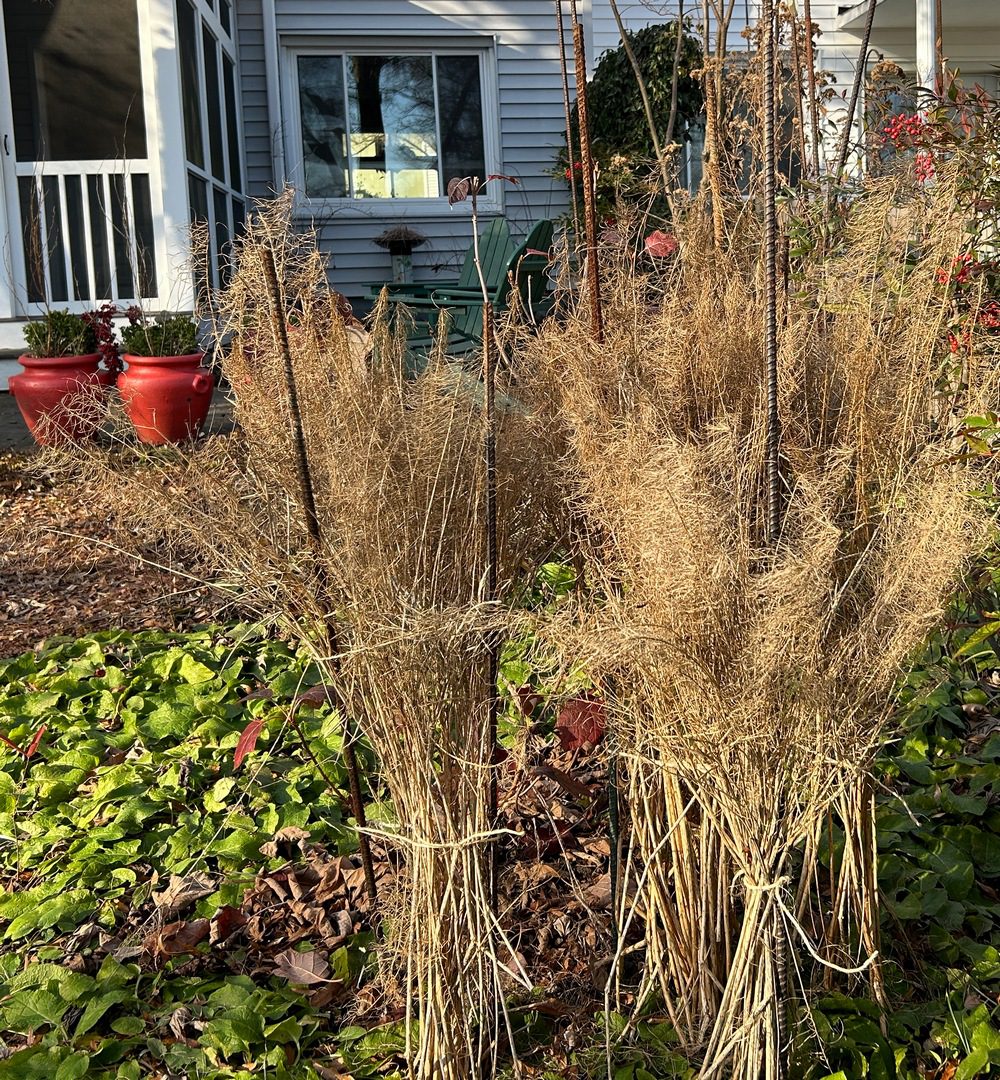
Another view of the bundled stems. At least in this spot, I like the look!
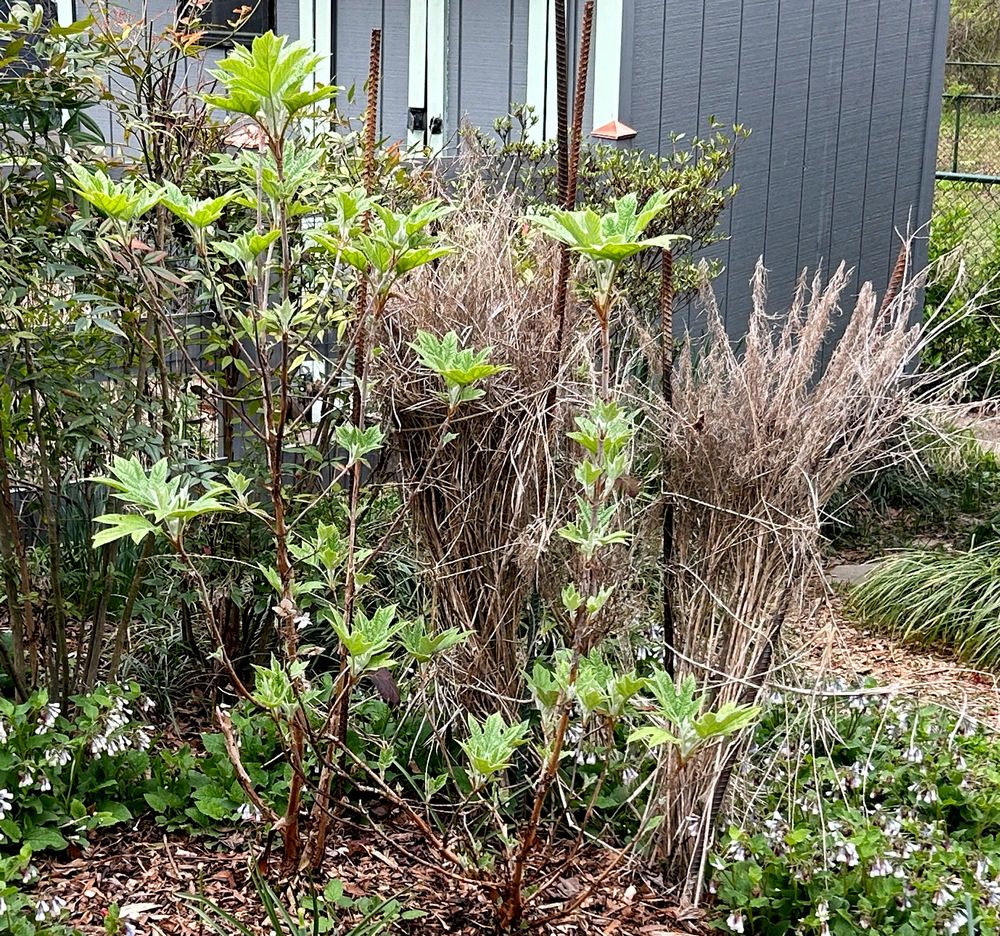
Here’s a recent view of the stems behind the emerging leaves of oakleaf hydrangeas.
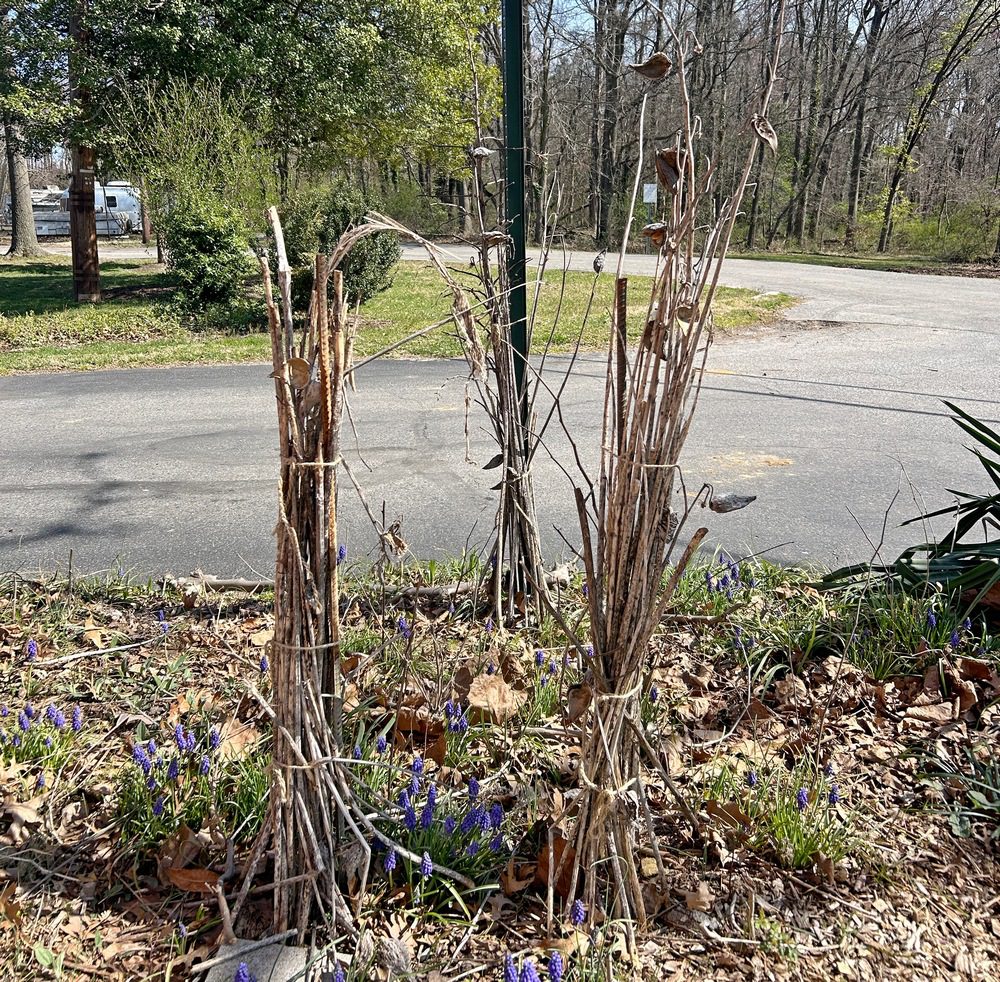
I tried the same technique with milkweed stems at my adopted garden, again with the help of rebar.
Still Questions
- How would I know if stem-nesting bees are using the stems that I’ve so carefully propped up for them?
- Further googling has uncovered a wider array of opinion on whether stems really need to be vertical, with some experts assuring us that stems are still helpful if they’re lying on the ground or gathered into a pile somewhere.
So my experiment will continue but sadly, the results may never be in – unless I divert my university studies to the Department of Entomology. (Unlikely in the extreme for my humanities-bent brain.)

